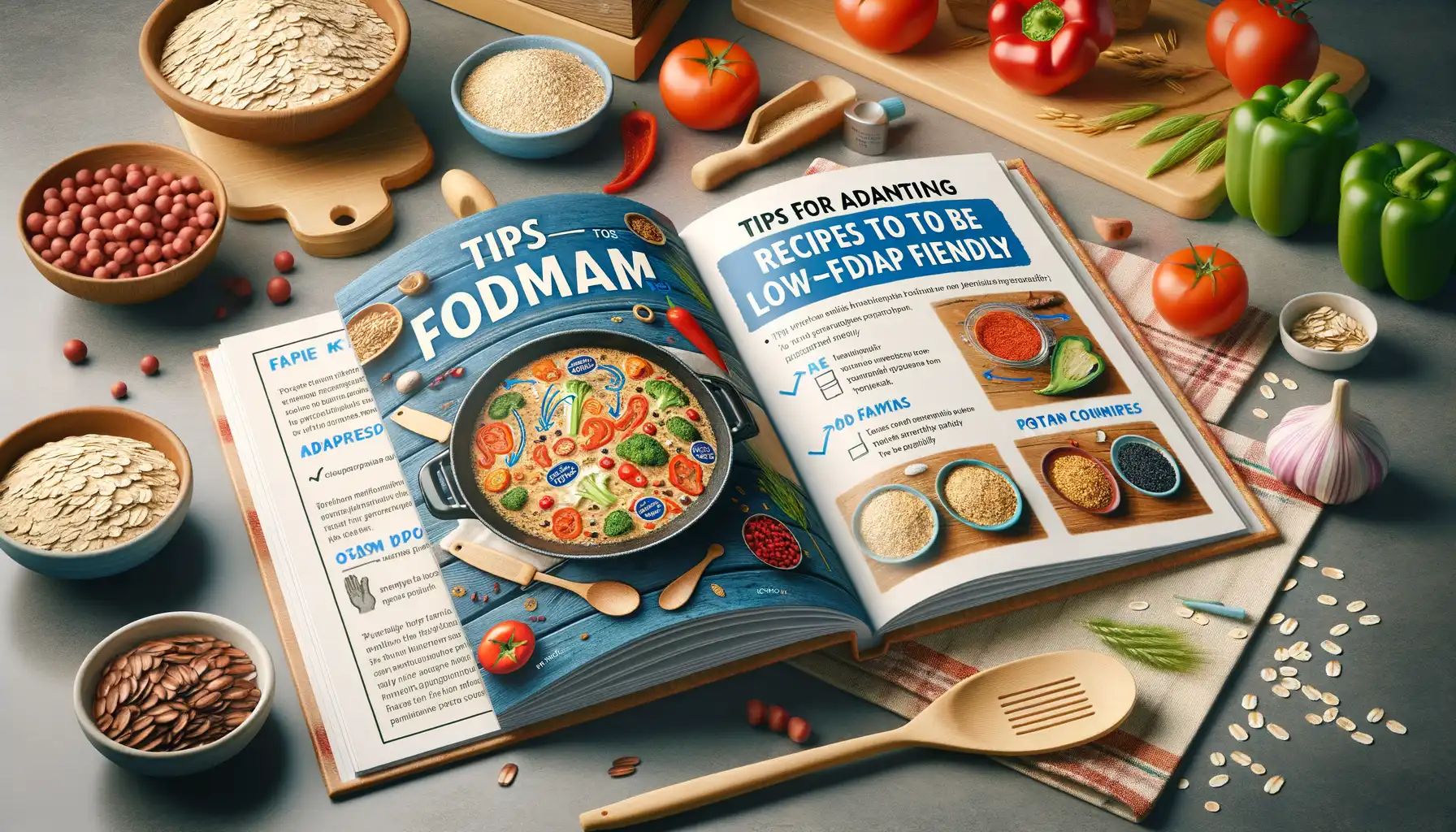Understanding the Low-FODMAP Diet
What Makes the Low-FODMAP Diet Unique?
Imagine your stomach is like a delicate garden—it thrives with care but can wilt under the wrong conditions. That’s where the Low-FODMAP diet comes in, acting as the ultimate gardener for sensitive digestive systems. This approach is designed to limit foods high in fermentable short-chain carbohydrates (aka those pesky FODMAPs) that can wreak havoc on people dealing with IBS or other gut issues.
Why does this matter? Because these carbs ferment like bubbling soda in your intestines, potentially causing painful bloating, gas, and discomfort. By carefully selecting foods that are low in FODMAPs, you can swap the chaos for calm and nurture harmony in your body.
While it might sound restrictive, the beauty of this diet lies in its potential—there’s no need to say goodbye to delicious meals. A single recipe tweak can take a dish from “off-limits” to “hello, let’s savor this!” You’ll soon find that even classic comfort foods can become compliant miracles.
- Think zucchini noodles replacing traditional spaghetti.
- Or almond milk standing in for dairy-based drinks.
Your gut will thank you later.
How to Spot High-FODMAP Culprits
Here’s the thing—some so-called “healthy” foods could secretly be stirring up trouble. Take, for instance, onions and garlic, the backbone of many recipes. Though flavorful, they’re high in FODMAPs and might leave you feeling like a deflating balloon. Fruits like apples, pears, and watermelon, while seemingly innocent, can also cause distress.
The key? Learning which alternatives do the trick. Want that garlicky tang without the bloat? Swap fresh garlic for garlic-infused oil, which is friendly to your system yet packed with flavor. Craving fruit? Reach for low-FODMAP choices like strawberries, oranges, or kiwis.
By uncovering these hidden triggers and mastering substitutions, you’ll gain freedom—not restriction—on your culinary journey.
Innovative Low-FODMAP Recipe Ideas

Deliciously Creative Meals Without the Digestion Drama
Cooking for a sensitive stomach doesn’t have to mean bland, boring meals. The world of low-FODMAP recipes is bursting with vibrant flavors and endless creativity—you just need to know where to look! Imagine digging into a creamy pasta dish that doesn’t send you running for the antacids or waking up to pancakes so fluffy they feel like a hug in food form. Yes, it’s possible.
Let’s talk dinner: how about a hearty shepherd’s pie made with zucchini mash instead of potatoes? Or a savory stir-fry featuring ginger-infused chicken and crisp bok choy, delivering all the crunch without the gut punches? If you’re more of a breakfast enthusiast, try a chia pudding layered with fresh berries and almond butter—simple, satisfying, and oh-so-gut-friendly.
- Low-FODMAP “fried rice”: swap out cauliflower for traditional rice and toss in scrambled eggs and sesame oil.
- Herb-roasted carrots: they’re sweet, smoky, and make the perfect sidekick to your main course.
These inventive dishes prove you don’t have to sacrifice taste while keeping your tummy happy. It’s not about restrictions—it’s about redefining your plate with new possibilities.
Essential Ingredients for Low-FODMAP Cooking

Stocking Your Pantry for Low-FODMAP Success
Cooking for a sensitive stomach doesn’t mean settling for bland or boring. It all starts with the right ingredients—your secret toolkit to whip up delicious meals while staying tummy-friendly! Let’s talk pantry essentials that will have you ready to cook up a storm without the digestive drama.
First up, you’ll want a trusted low-FODMAP flour. Say goodbye to wheat and hello to options like *almond flour*, *buckwheat flour*, and *rice flour*. They’re perfect for everything from fluffy pancakes to crispy coatings for chicken tenders.
Next, let’s tackle flavor! Traditional stock cubes and garlic powder? Nope. Instead, lean into *herbs* (fresh or dried), *infused oils* (garlic-infused olive oil is a game changer), and *spices* like turmeric or smoked paprika. These pack a punch without packing in those pesky FODMAPs.
- Lactose-free dairy, like yogurt and cheese, offers creamy indulgence without the bloat.
- Canned lentils or chickpeas—rinsed really well!—are protein-packed goodies that fit the low-FODMAP rules.
- For sweetness, reach for *maple syrup* or *brown sugar*. No need for high-fructose troublemakers here.
Low-FODMAP cooking isn’t about restriction—it’s about being smart, prepared, and ready to embrace ingredients that love you back.
Tips for Adapting Recipes to Be Low-FODMAP Friendly

Transforming Your Favorite Recipes, the Low-FODMAP Way
Adapting recipes to fit a low-FODMAP diet doesn’t have to feel like solving a culinary Rubik’s Cube. With a little creativity and a dash of patience, you can turn your cherished meals into gut-friendly delights. Start by identifying potential troublemakers—think garlic, onions, wheat, or high-lactose dairy. Your goal? Swap them out for equally delicious alternatives!
For instance, instead of onion, try infusing your dishes with garlic-infused oil or the green tops of spring onions. And dairy? There’s a treasure trove of lactose-free options waiting for you at the store. Remember, it’s not about compromise; it’s about discovery.
- Replace honey with maple syrup for sweetness without digestive drama.
- Craving pasta? Opt for gluten-free versions made from rice or quinoa.
- Use canned lentils instead of dried—they’re naturally lower in FODMAPs!
Rethink Seasonings and Staples
If spices and seasonings are your love language, you’ll be glad to know that many of them are naturally low in FODMAPs. Reach for fresh herbs like basil, parsley, or thyme to layer flavor into your meals. Spices such as turmeric, paprika, and cumin are also safe bets—but steer clear of pre-mixed seasoning blends that might sneak in onion powder. Learning to improvise your own spice mix is like painting your meal with bold, digestive-friendly strokes.
And don’t underestimate the power of staples like rice, oats, or potatoes. These humble ingredients lay the perfect foundation for hearty low-FODMAP meals, whether you’re whipping up a cozy soup or a comfort-food casserole.
Benefits of Low-FODMAP Diet for Digestive Health

How This Diet Works Wonders for Your Gut
Imagine waking up without that heavy, uncomfortable bloating or the sharp pangs in your stomach after a meal. That’s exactly what the Low-FODMAP diet can offer—a chance to reclaim your digestive peace. By cutting out short-chain carbohydrates that ferment in your gut, this diet gives your overworked digestive system a break. It’s like swapping noisy city chaos for a quiet countryside—your gut finally has space to breathe.
For those with IBS, it feels like discovering a magic key. Suddenly, food becomes your friend again! No more second-guessing every bite or avoiding social meals. Plus, if you’ve ever felt drained after a meal, you’ll be amazed at how much energy you gain when your body isn’t consumed by trying to process difficult-to-digest foods.
- Reduced bloating: Say goodbye to that “overinflated balloon” feeling.
- Less gas: No more awkward post-lunch meetings for you.
- Fewer cramps: Your gut can start focusing on being happy, not angry.
Why Your Gut Will Thank You
Think of the Low-FODMAP diet as a gentle, understanding friend who knows exactly what you need. By identifying and eliminating your personal triggers (dairy? garlic? onions?), this diet customizes itself to your unique digestive quirks. It’s not about restriction—it’s about freedom.
The best part? This isn’t a one-size-fits-all plan. It’s tailored specifically to help you identify foods that love your gut back. And once you know them, you can fill your plate with confidence instead of worry. With every meal, it’s like giving your stomach a big, comforting hug.